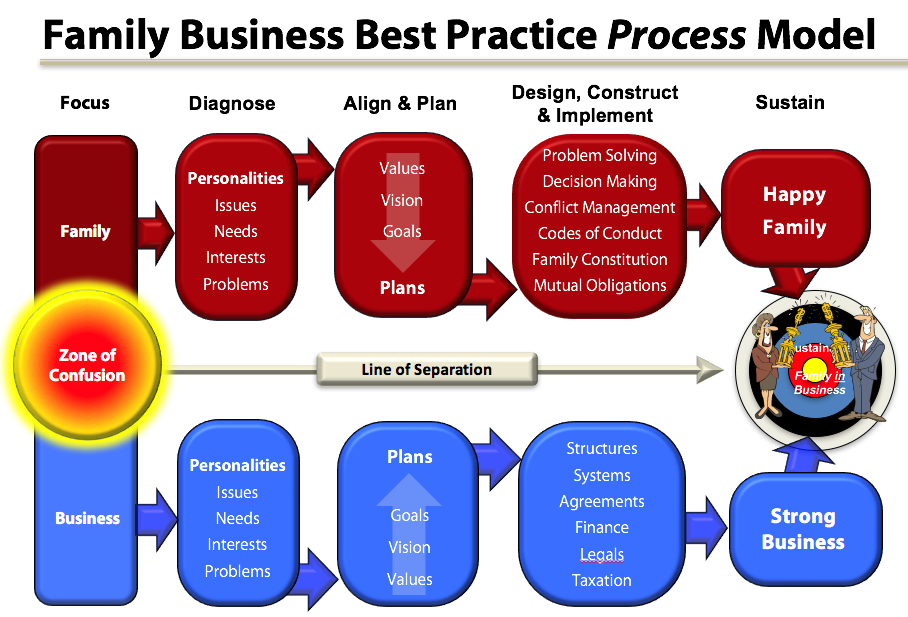One of the primary goals of any business family is to achieve long term peace and prosperity – for the family and the business.
This requires excellence, or the application of “best practice”, in both the family and the business. But, there’s a problem: almost everything that makes a family successful conflicts with business success factors.
So, if you’re crazy enough to bring these opposites together in a family business, you need to work on both your family and your business, doing the right things and avoiding the wrong things, to achieve good outcomes.
Family Business Best Practice = Happy Family + Strong Business.
To consistently produce this result we need to systematise our family and business operations, preferably using a tried and tested model that’s been in use, in one form or another, for hundreds of years. Family businesses have been around for a long time. We don’t need to reinvent the wheel.
Implementing Family Business Best Practice
Because every family business has its own unique character and challenges – there never will be an off-the-shelf, one-size-fits-all, prescriptive suite of best practice solutions … so beware anybody who suggests otherwise! Instead, we need a flexible process model capable of significant customisation, that works as a mud map to success, and can deliver optimal outcomes for most families, under most circumstances, ie: we need: “tools, not rules”.
Elements of Family Business Best Practice
The family and the business should happily and effectively support each other, so each entity has a better chance of success, and is more likely to achieve its own, and their mutual goals. This requires them to create and communicate their strategic objectives, identify specific goals, develop operational plans to reach those goals, and to then act respectfully, responsibly and professionally in their dealings, to achieve success.
There are 7 Elements to family business success, all apply to both the family and the business:
- Clarity – what are we doing and why are we doing it?
- Commitment – how and when are we doing it, and who’s responsible?
- Culture – how we ensure we are actually doing what we say we do, when we say we’ll do it, the way we say we’ll do it.
- Strategy – big picture plans for the family and the business, supported by detailed operational plans.
- Structure – bodies and agreements that help to make things happen: Boards and Executive Management Teams; Family Councils and Family Forums; Constitutions and other agreements.
- Systems – formal, written, policies and procedures – to provide consistency of approach, avoid debates and conflicts, and help to avoid the need for constant reinvention.
- Skills – having the right people, with the right attitudes and skills, in the right roles.
The Family Business Best Practice Process
Family Business Best Practice is approached as a family journey:

To start developing your own Family Business Best Practice please call or contact The Solutionist Group.
